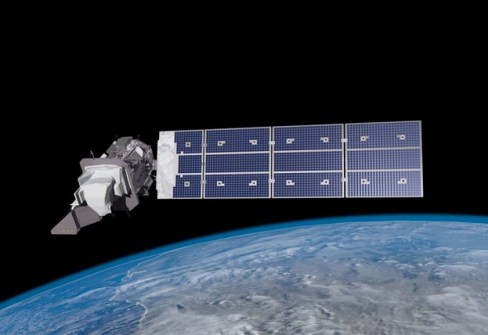
Australia and the United States have formally signed a bilateral statement recognising Australia’s involvement in the Landsat 2030 International Partnerships Initiative, which will be based on the upcoming Landsat Next satellite series.
The statement was signed by Foreign Minister Penny Wong and US Secretary of State Antony Blinken at the Australia-US Ministerial Consultations in Washington this week.
As Spatial Source reported earlier this year, Australia has committed $207.4 million to the Initiative over four years, as well as ongoing funding, which will be used to enhance the satellite ground station in Alice Springs and provide new data processing and analytics capabilities.
The triple-satellite Landsat Next mission, due for launch in 2031, will boost both temporal and spectral coverage, with the satellites spaced 120 degrees apart at an orbital altitude of 653 kilometres.
“The Landsat Next partnership will ensure Australia has access to the next generation of Landsat satellite data, which will deliver the clearest images of our planet from space,” said the Minister for Resources and Northern Australia, Madeleine King.
Minister King also said that joining the Initiative constitutes “the biggest and best selfie we could take of our great country,” a claim which many people in geospatial sector might consider to be a bit disingenuous, given the federal government’s approach to the satellite Earth observation (EO) efforts.
Many in the sector might argue that the “the biggest and best selfie” would have come from the National Space Mission for Earth Observation (NSMEO), which the current federal government abruptly cancelled last year.
The NSMEO would have seen four Australian-owned EO satellites placed into orbit.
When the then federal treasurer Josh Frydenberg delivered the 2022–23 Budget, $38.5 million per annum was initially earmarked for the four satellites. The overall program was promised $1.16 billion out to 2039.
All this means that Australia is essentially entirely reliant on foreign-owned and -operated EO satellites, which poses a substantial sovereign risk and leaves the country vulnerable to vast economic loss should access to those satellites be denied or interrupted.
In a 2021 report, Deloitte found that “Australia’s EO sector, and the benefits EO data generates for other industries, is exposed to a significant sovereign supply risk: Australia does not own or operate any EO satellite systems. At the same time, the threat of a DOS [denial of service] event is becoming increasingly real, particularly in the context of Australia’s role in the Global Observing System (GOS).”
The Deloitte report estimated the cost of a DOS event for Australia as follows:
- 81% of activity in the EO sector would almost immediately cease to exist as we know it, equating to $226 million in lost (direct) value added over one year.
- The Australian economy (GDP) would contract by $1.9 billion due to the disruption in activity by end users of EO data.
Earlier this year, a report entitled Continuity of Earth Observation Data for Australia: Risks — produced by Earth Observation Australia, the University of Queensland and Symbios — further outlined the problems of sovereign risk.
“All of the satellite EO data utilised by Australia originates from foreign sources within all sectors — government, research, and commercial,” the report said.
“Currently most of the key data sources — importantly, free and open sources — are without binding data supply agreements to support supply risk management and mitigation. This includes foundational data supply from the Landsat program (USA/USGS, NASA), the Copernicus program (European Commission), and from various foreign weather satellite operators.”
The report went on to say that “The foreign dependence and ownership of EO infrastructure presents significant risks for Australia at the time of this report. These risks warrant assessment and tracking to determine any changes in the associated risk levels into the future.”
The report identified and analysed 39 risks in terms of their importance to the Australian economy and international relations. Of them, six are rated as having a ‘very high’ potential impact based on their likelihood and consequences, while 32 of the 39 are rated between having ‘possible’ and ‘almost certain’ affects.
The report also identified 171 federal, state and territory government programs dependent upon satellite EO data usage. Yet “Almost all of Australia’s EO data supply is subject to decisions taken by foreign governments around open and free data supply…,” it said.







